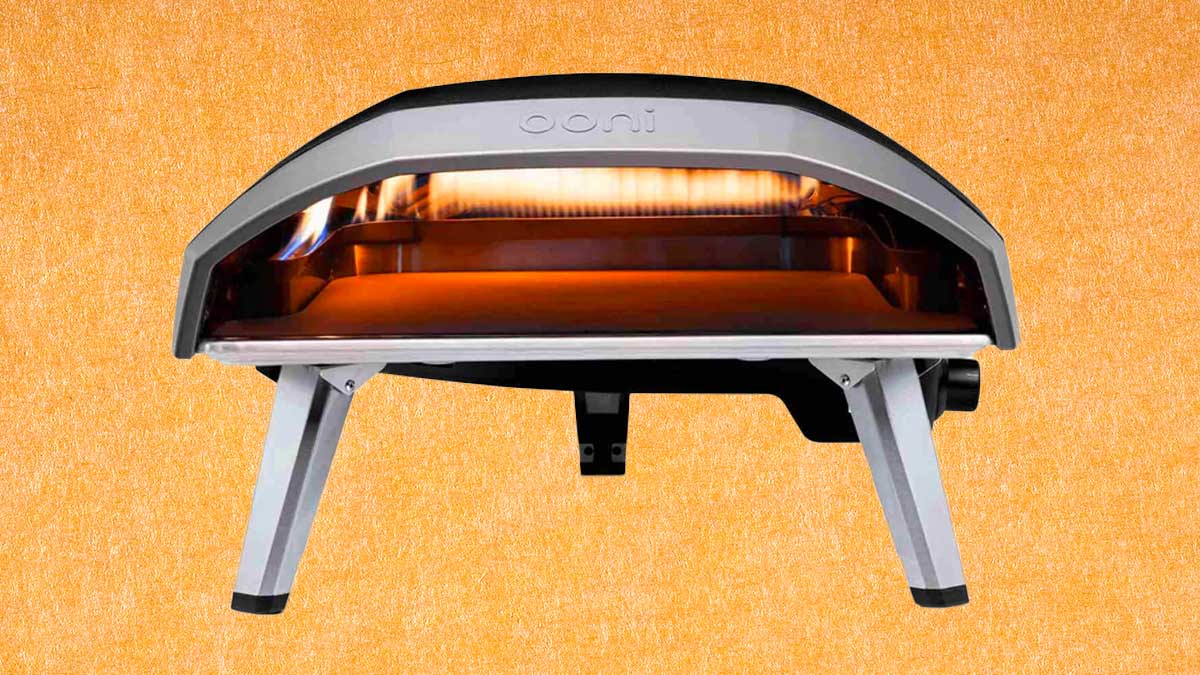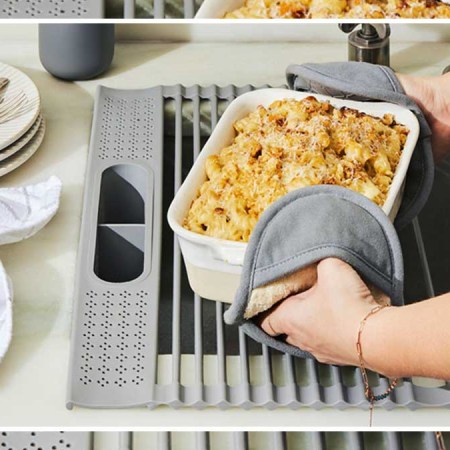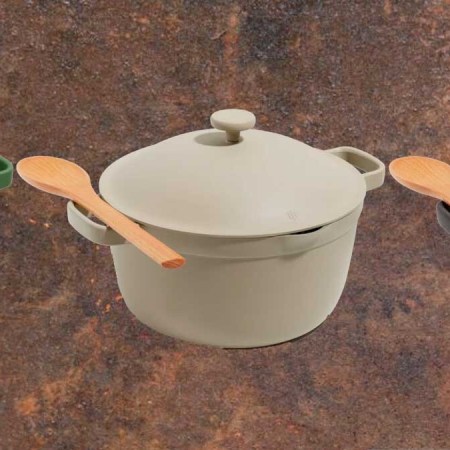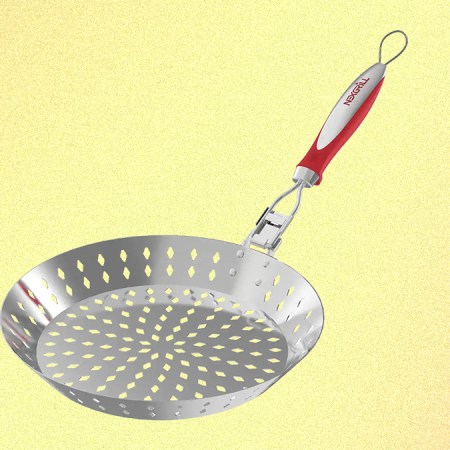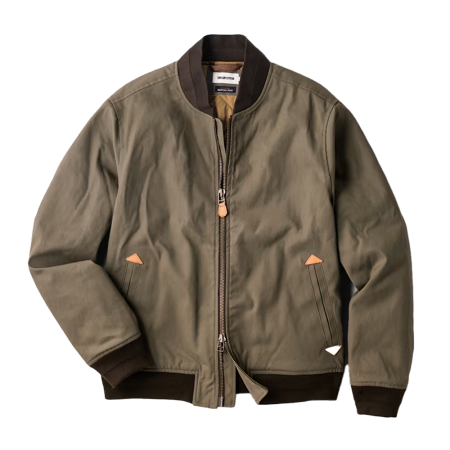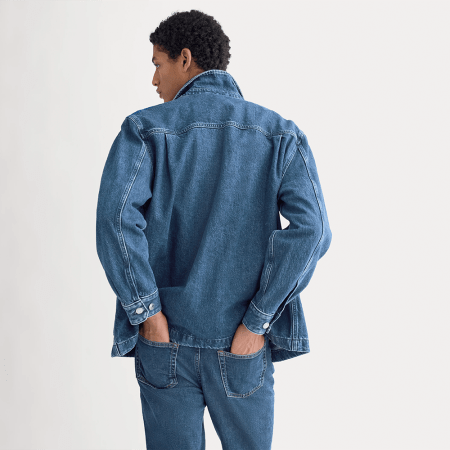Nota bene: All products in this article are independently selected and vetted by InsideHook editors. If you buy something, we may earn an affiliate commission.
Does one ever need to own a $500 portable, flame-driven pizza oven that reaches internal temperatures in excess of 900° Fahrenheit? In a word, no. But I’d be lying if I said that, back during the peak days of the pandemic, I wasn’t seriously considering the question.
Pre-pandemic, I had access to such an abundance of excellent pizza that I’d never bothered cooking it myself. It’s not just that Portland, Oregon, has a wealth of superb pizza restaurants, although we do. It’s also that I’m fortunate to be friends with a group of pizza-obsessives who host a frequent “Pizza Speakeasy” where, with cocktails and toppings as the price of admission, I got to enjoy some of the best pizza in the city cooked in all kinds of styles.
The pandemic changed all that, putting Pizza Speakeasy on ice and drastically limiting restaurant options. Cut off from my usual sources, it was time to take the dough into my own hands and learn how to make elevated pizza at home. That led to trying out all kinds of gear, from a simple baking steel and quality pans to those incredibly hot backyard pizza ovens.
The central challenge anyone faces making pizza at home is heat — not just the ambient heat of your oven, but also how to efficiently transfer that heat to your pizza. Commercial pizza ovens reach higher temperatures than typical home ovens and also have heavy decks on which the pizza cooks. When a pizza hits that hot deck, heat is rapidly transferred to the pie. This produces the airy interior of the crust when air and water vapor in the dough expand, as well as a nicely browned or charred bottom. Achieving these tasty results at home is a process of hacking your oven to approximate those conditions.
For a long time, the go-to option for this was a pizza stone. As the name suggests, it’s a stone that you place in your oven to cook pizza on top of, mimicking the deck of a professional pizza oven. In recent years this has been supplanted by the baking steel. The inspiration for this came from Nathan Myhrvold’s landmark Modernist Cuisine. Myhrvold posited that a slab of steel would be a superior pizza-cooking surface for home ovens because it’s much better at conducting heat. In 2012, Andris Lagsdin launched his first Baking Steel project on Kickstarter, surpassing his fundraising goal by more than a factor of ten. Today, for just under a hundred bucks, you can have one his slabs of steel shipped to your home.
There are a few models of baking steel, but I tested the original. It’s ¼ inch thick and 16 x 14 inches wide. It’s a slab of steel! It’s heavy! It weighs in at 15 pounds. That’s slightly unwieldy to move around your kitchen, but it’s exactly what you want for transforming your home oven into a pizza-making machine. The thing retains a ton of heat, which radiates into your pizza as soon as you slide it onto the steel. (Speaking of, you’ll also want to pick up a wooden pizza peel for transferring your uncooked pizza to the steel.)
Even as a total amateur, I was able to make satisfying pizzas on the steel from day one. My first attempts weren’t exactly pretty, with too-thick dough, too-small a diameter and uneven shape, but even so, the crust was nice and crispy on the bottom with big, puffy air pockets on the edges. As I got better at making and handling dough — there’s no tool or hack for this, you just have to put in the practice and get an informative book like Ken Forkish’s Elements of Pizza — my pizzas got better, too. Within a few weeks I was making pies that looked good enough for Instagram and, more importantly, tasted pretty damn good.
For typical indoor home ovens that max out around 500° or 550° Fahrenheit, adding a pizza steel provides a significant upgrade. But let’s say you want to take the party outside or master Neapolitan pizza. In that case, you may want to invest in a dedicated pizza oven capable of reaching even higher temperatures.
Taking it outside
Paul Willenberg, one of the founders of what evolved into Pizza Speakeasy, constructed a wood-burning oven in his backyard in 2011 for cooking pizzas and other dishes. His oven deck hits temperatures of up to 900°, though he typically runs it a bit lower. “Ten years ago, if you wanted to cook real Neapolitan-style pizzas, you had to build your own oven. But now, if all you want to do is make pizza, there’s no reason to.” That’s because there are now consumer ovens capable of hitting those same temperatures, putting Neopolitan-style pizzas in reach of anyone with a little outdoor space and some spare cash.
A pioneer for these products is Tom Gozney, who extended his business building restaurant pizza ovens with the Roccbox, a practical consumer oven that raised $1.2 million in crowdfunding in 2016. The Roccbox reaches the high temperatures of a big wood-fired oven but with a much smaller footprint. It fits on a tabletop and works with a standard propane hookup or a detachable wood burner. A competitor is Ooni, which offers a variety of consumer ovens. The most relevant is their new Ooni Koda 16, which offers many of the same advantages of the Roccbox with a larger cooking surface and flames on two sides of the oven, rather than just in the back.
We tested them side-by-side, consuming far too much pizza in the process, and they both perform fantastically well. If you’re looking for that perfect Neapolitan crust – thin, chewy, airy on the edges with leopard-spotted charring on the bottom — these bring the heat to achieve that. Pizzas in both ovens cook in 90 seconds or less. One difficulty compared to a restaurant-size oven is that the sight lines are more challenging, so that if you’re not careful it’s easy to burn the back edges of the crust that face the flames. Once the pie goes into these ovens, cooking becomes a very active process. You have to stay on top of turning the pizza for even cooking. The result is worth it, though. With good dough, ingredients, and technique, these ovens make it possible to perfect pies that would be impossible to replicate in your kitchen oven.
The general consensus among Pizza Speakeasy regulars is that while the Roccbox outperforms past Ooni models, the greater size of the Koda 16 offers real advantages. They both retail for $499, giving the latter an edge for the moment. “Both ovens produce top-notch Neapolitan pizza, but it’s just easier to work with the Ooni Koda,” says Adam Lindsley, former pizza blogger and author of The Forever Isle and Cheese Beer Wine Cider. There’s more maneuverability inside the oven, and you can simply make a bigger pizza with it. It does take up a little more horizontal space, however, and the Roccbox may offer better portability (especially if you buy the optional cover/carrying case, ideal for taking your pizza party on the road).
Choosing your style
The Roccbox and Ooni Koda are both sexy and fun, and anyone who’s into pizza will have a blast cooking with them. But to get back to the question at the beginning of this article, do you really need to go all-in on one of these ovens to feed your pizza obsession? They offer a few clear advantages, like not heating up your house or apartment, portability, faster heating time, and unsurpassed temperatures. Whether they’re the right option for you, however, ultimately comes down to the style of pizza you enjoy and who you want to make it for.
Brett Adams, current InsideHook contributor and former pizza cook, enjoyed cooking with both but concluded that they “convinced me to be happy with the steel.” He likes a crisper crust that can carry more toppings, and the pizza steel in his home oven achieves that. Adam Lindsley expresses a similar sentiment, even though he owns a Roccbox. “While those ovens are a great solution for home bakers looking to make Neapolitan pizza, Neapolitan is not my favorite style of pizza. My favorite is Neo-Neapolitan, which is closer to NY-style with some Neapolitan influence.” With his steel and his 550° oven, he’s getting exactly the results he wants. “I am so happy with the pizzas coming out of my oven these days, I can’t even tell you.”
Nico Galoppo, a frequent host of Pizza Speakeasy, also often cooks on steel rather than his outdoor oven because he can make bigger pizzas. “I like the inside oven/baking steel when I want to bake a larger pie for the fam and not deal with slinging pies while everyone else is eating,” he says. Like others in the group, Nico suggests trying your hand at the very on-trend Detroit-style pizza, which boasts a rectangular thick crust with crispy cheese walls at the edges.
For that, you just need a steel and the right pan. Nearly all of us have purchased the 10 x 14-inch pans from Lloyd Pans, a specialty producer in Spokane, Washington. “They cook the pizza evenly and release them with zero sticking,” says Adam. “They’re incredible.” At just over $30, they’re a very affordable way to elevate your home pizza game. Rather than chasing extremely high temperatures and rapid cooking times, you can embrace styles of pizza that are well-suited to the constraints of your home oven.
Perhaps the best case for outdoor ovens is less the specific pizzas you can make with them than the opportunities they create for socializing. The social aspect is ultimately what pizza is all about, and you can view learning to make pizza now as an investment in parties for years to come.
We've put in the work researching, reviewing and rounding up all the shirts, jackets, shoes and accessories you'll need this season, whether it's for yourself or for gifting purposes. Sign up here for weekly style inspo direct to your inbox.
